If you’re new to snowboarding, snowboarding tips can help you get started and confidently build your skills. Remember, everyone was once a beginner, so don’t be discouraged. The key is to dedicate time to training and practice. Spending more time on the slopes will improve your snowboarding abilities, making you feel more comfortable and confident in your snowboarding journey. So, embrace the learning process, enjoy the thrill of snowboarding, and keep practicing to progress and excel on the slopes!
Snowboarding tips: Make Sure You Have Proper Gear
Ensuring you have the right gear is crucial for a safe and enjoyable experience. Comfortable feet are paramount for a long day on the slopes. Make sure your boots fit well and match your gear. Your toes should touch the end of the boot without curling or pressing too hard. If the boot is too big, your heel may lift, affecting your control and potentially leading to injuries.
Snowboarding tips: To stay comfortable and warm, choose appropriate clothing. Avoid wearing clothes that make you feel like you’re in a private sauna. Opt for a dress that provides insulation without overheating you. Proper gloves, goggles, and beanies are essential to protect yourself from the cold and enhance your performance on the slopes. You can have a fantastic time snowboarding with the right gear without compromising your safety and comfort.
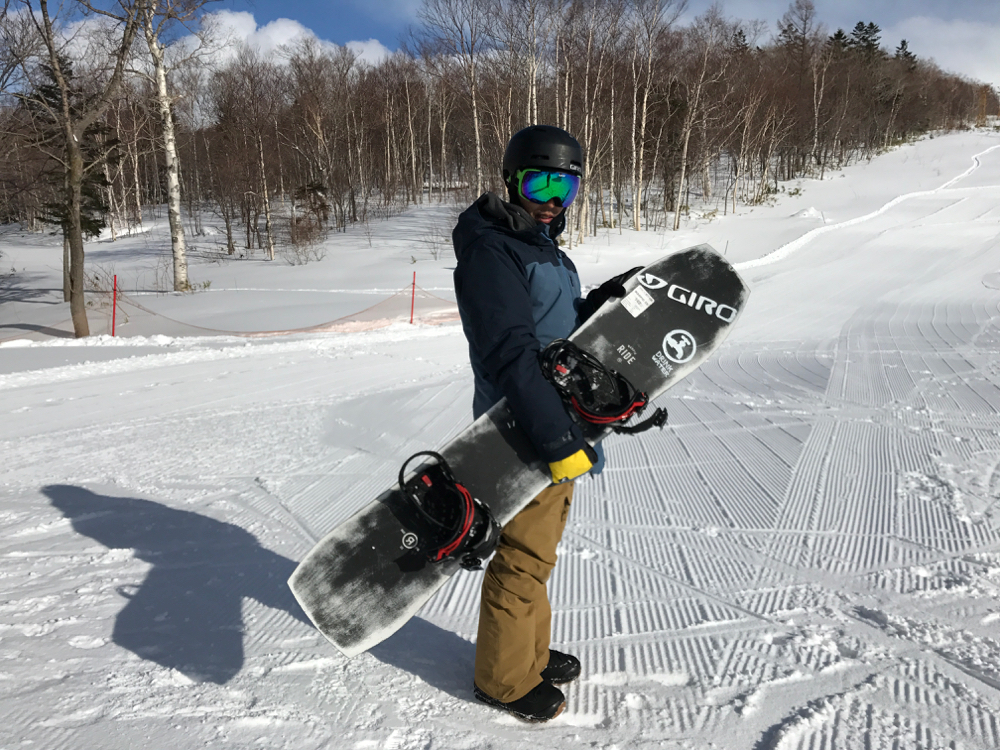
Make Sure You Have The Right Board
When choosing a snowboard, consider the different styles available. Look for a board with a rocker camber as a great starting point. A rocker camber means that the rocker is in the middle of the board, between your feet, while each foot has a camber. This combination allows you to grip the board better between your feet, reducing the likelihood of catching edges as you learn to turn.
For beginners, a board with a rocker camber is excellent as it makes turning more accessible and minimizes the risk of catching edges. It’s a versatile option for learning to turn and ride confidently on various terrains.
Freestyle boards are ideal for those interested in riding in the parks, as they are designed to perform well across the mountain and in terrain parks. On the other hand, freeride boards are better suited for backcountry and off-piste adventures.
Each type of snowboard comes with a rocker camber, providing different benefits depending on your riding style and preferences. When visiting a snowboard shop, consider these factors to find the board that suits you best and enhances your snowboarding experience.
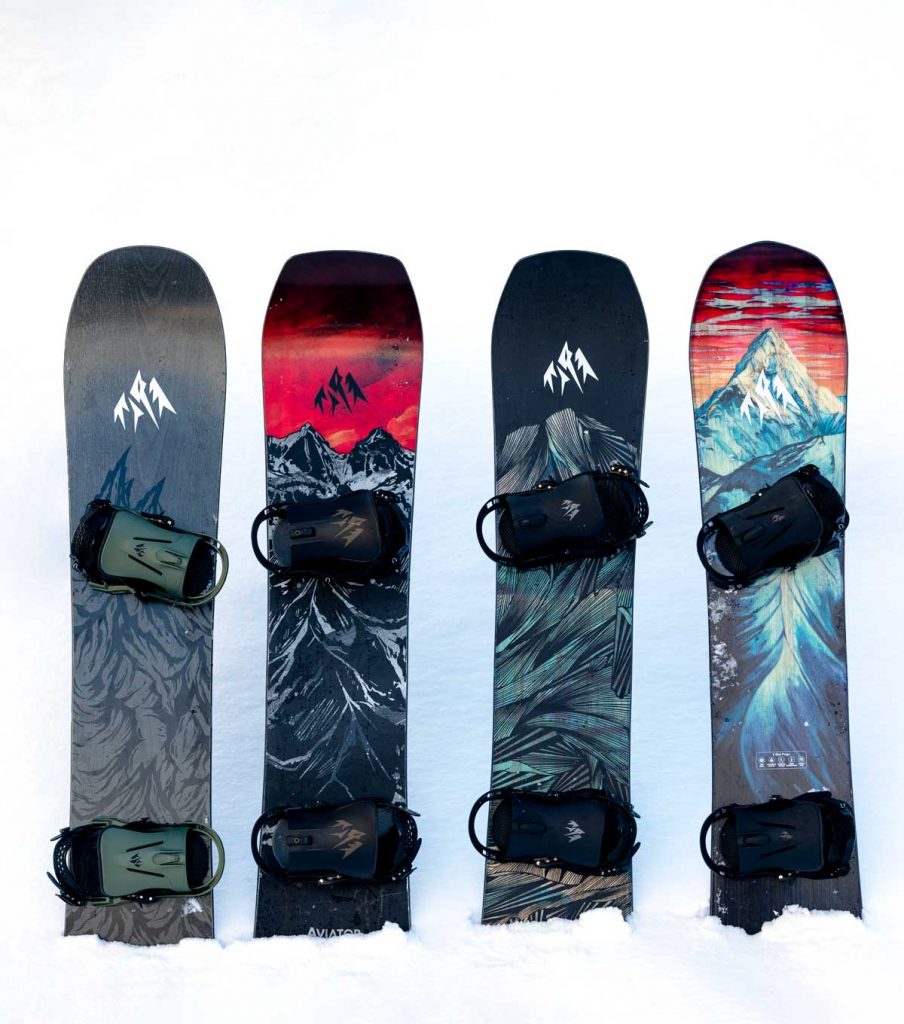
Always Look Forward And Watch Where You Want To Go
Snowboarding tips: One crucial aspect is connecting your eyes, body, and board. As you descend the mountain, remember that your body and board will follow the direction your eyes are looking. So, it’s essential to maintain proper visual focus.
Avoid looking directly at your feet while snowboarding, as this can lead to instability and potential falls. Instead, keep your eyes focused on where you want to go, the path you want to take down the mountain. By looking ahead and maintaining a forward gaze, you can steer yourself in the desired direction and avoid unexpected obstacles.
Additionally, avoid fixating on objects or hazards you want to avoid, such as trees or other riders. If you look at them, your body might unintentionally steer toward them. Instead, focus on the clear path ahead, enhancing your control and confidence while snowboarding.
Training yourself to look ahead and maintain proper visual focus enhance your snowboarding skills and have a safer, more enjoyable ride down the slopes. Remember, your eyes lead the way, so keep them on the right path and enjoy your snowboarding adventures to the fullest.
Determine your stance
One of the essential snowboarding tips is determining your snowboarding stance or position. Your stance dictates which foot will be your front foot and which will be your back foot on the snowboard. Deciding your stance before hitting the slopes can make learning much smoother, especially for beginners.
There are two main snowboarding stances: regular and goofy. In a regular stance, your left foot is forward on the snowboard, and your right foot is at the back. In a goofy stance, it’s the opposite, with your right foot in the forward position and your left foot at the back. Most snowboarders find their dominant foot more comfortable in the back position, regardless of whether they choose a regular or goofy stance.
To determine your snowboarding stance, consider your natural comfort when standing on a board or your dominant foot in other sports. Some people might intuitively know which stance feels right for them. Feeling confident and balanced in your chosen stance is essential, as it affects your control and stability while riding.
By figuring out your snowboarding stance beforehand, you’ll be better prepared for your snowboarding adventure, making learning more enjoyable and efficient. Once you’ve found your stance, you’ll be ready to hit the slopes and start your exciting journey in snowboarding.
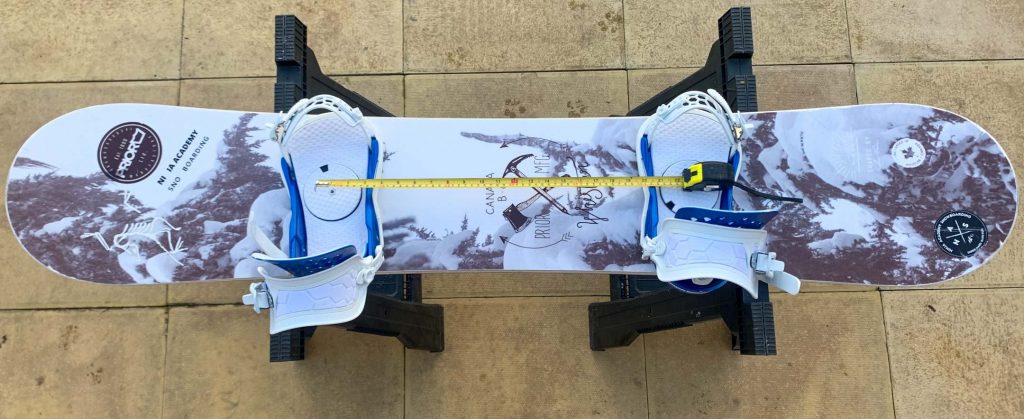
Snowboarding tips: Learn To Skate Before You Take The Lift
Learning snowboarding quickly requires some preparation and practice. Before your first lesson, there are steps you can take to familiarize yourself with the basics and improve your skills.
Firstly, it’s essential to understand that snowboarding is not related to skateboarding or ice skating. The front leg is attached to the snowboard, while the back leg remains free for control and balance.
One valuable skill to practice is skating on your snowboard. Skating is navigating flat terrain or getting on and off a lift. By getting comfortable with skating, you’ll have better mobility and control when moving from one point to another on the slopes.
While it might be tempting to try snowboarding for the first time on a lift, it’s not recommended. Instead, focus on practicing your basic skills, such as skating and getting comfortable on the board, before hitting the slopes or attempting to use a lift. This preparation will lay a solid foundation for your snowboarding journey and make your first lessons more productive and enjoyable.
Remember that snowboarding is a skill that improves with practice and dedication. Taking the time to learn the basics and build your confidence will set you up for success as you progress in your snowboarding abilities. So, start practicing early, stay patient with yourself, and enjoy the exhilarating experience of snowboarding.

Strap On Standing Up
Conserving energy while snowboarding is a crucial snowboarding tips to maximizing your enjoyment on the slopes. One area where you can save energy is by learning how to stand with your feet together on your snowboard.
At first, sitting on the board and positioning your feet on it is relatively easy as you can maintain your balance. However, standing up again with both feet strapped to the board can be challenging and energy-consuming. Taking the time to practice and master the skill of standing up with your feet together is essential.
When you can efficiently stand up with your feet together, it will save you energy and effort throughout your snowboarding sessions. You won’t have to spend unnecessary time and effort getting up from the ground, allowing you to focus more on enjoying the thrill of riding down the slopes.
Start by positioning your board in a stable, flat area to practice this skill. Then, practice getting up with both feet strapped in, keeping them together as you rise. Over time, you’ll improve your balance and coordination, making it easier and more efficient to stand up with your feet together.
By mastering this technique, you’ll enhance your overall snowboarding experience, as you’ll have more energy to spend on the slopes, making the most of your time on the snow.

Bend Your Knees
One essential technique to keep in mind while snowboarding is to maintain bent knees and look up. While this seems so basic, this is one of the most important snowboarding tips in this article.
By keeping your knees bent, you create a strong and stable base, allowing you to feel the snow beneath you and maintain better control of your board. This is particularly crucial when navigating through various terrains and snow conditions. Bent knees give you the ability to absorb shocks and bumps, making your ride smoother and more controlled.
Additionally, having bent knees provides you with more flexibility and manoeuvrability. You’ll find it easier to initiate turns and perform various snowboarding manoeuvres when your knees are in a slightly flexed position.
While keeping your knees bent, looking up and focusing on where you want to go is essential. Your body naturally follows the direction of your gaze, so looking ahead helps you anticipate and respond to changes in the terrain and obstacles on the slope. This enables you to make adjustments and maintain proper balance as you ride.
Remember that you don’t need to bend your knees at a perfect 90-degree angle. The key is to maintain a comfortable and relaxed knee flex throughout your snowboarding session. As you gain experience and confidence, you’ll develop a natural stance that best suits your riding style and preferences.
Keeping your knees bent and looking up while snowboarding’ll enhance your stability, control, and overall riding experience on the slopes. It will allow you to have more fun and be better prepared to handle various snowboarding challenges with ease.
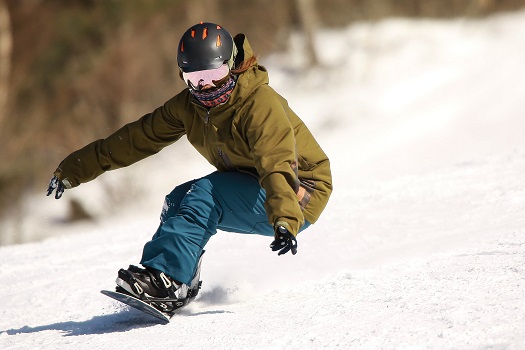
Ride Across The Slope
When riding the ski lift and speeding down the mountain, it’s crucial to maintain control of your board and ensure a safe descent.
Snowboarding tips (for absolute beginners): To avoid falling off the ski lift, ensure that you are properly seated and keep your snowboard securely in place. Pay attention to the lift operators’ instructions and remain seated until you reach your designated unloading area.
When descending down the mountain while snowboarding, it’s important not to go straight down the hill but instead traverse across the slope. This technique, known as “side slipping,” involves moving from left to right and back again as you ride down the slope. Side slipping allows you to control your speed and direction better, making it easier to navigate through various terrains and obstacles.
By traversing across the slope, you can regulate your speed and prevent yourself from going too fast. If you feel that you are picking up too much speed, simply traverse more across the slope to slow down. Conversely, if you want to increase your speed, traverse less and let gravity do its work.
While side slipping, it’s essential to be aware of your surroundings. Keep an eye on other snowboarders and skiers around you to avoid collisions and maintain a safe distance from one another. Always look uphill before crossing the slope to ensure that no one is coming down at high speed.
Maintaining control and paying attention to your surroundings will help you have a safer snowboarding experience and enable you to enjoy the thrill and excitement of riding down the mountain with confidence. Remember to practice side slipping and keep safety as your top priority while snowboarding.
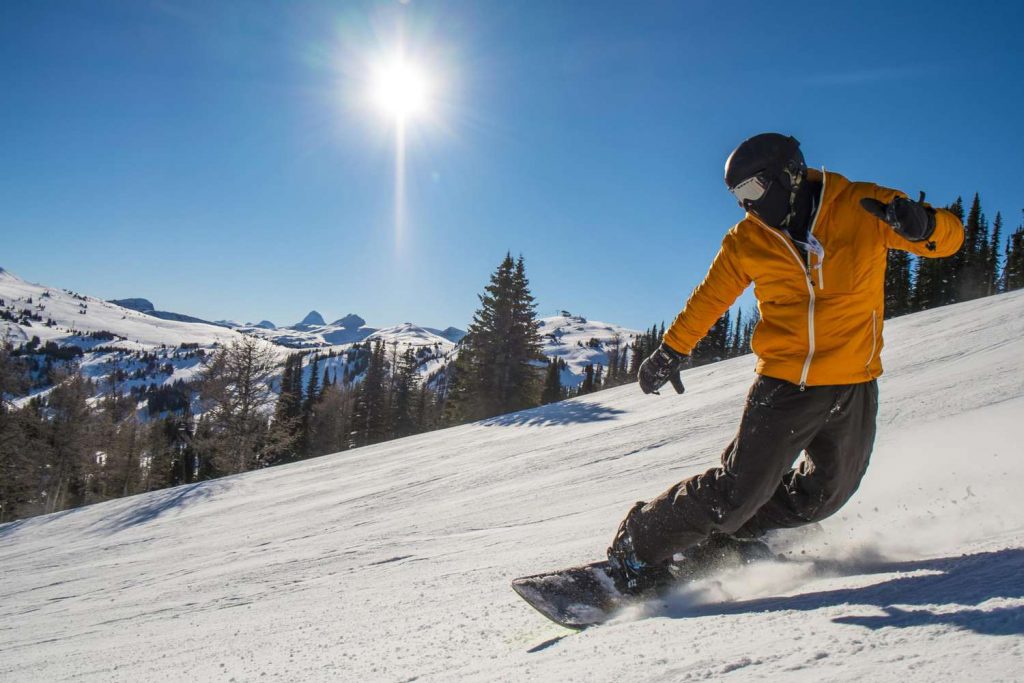
Snowboarding tips: Practice On The Bunny Slopes
When you’re on the slopes, choosing the appropriate terrain that matches your skill level is essential. Starting with the bunny hill or designated beginner slopes is highly recommended if you’re a beginner.
The bunny hill provides a gentle and gradual slope, making it easier for beginners to learn and practice snowboarding techniques. It offers a safe and controlled environment where you can focus on developing your skills without feeling overwhelmed by advanced skiers and snowboarders.
As a beginner, you may encounter faster and more experienced riders on the slopes, which is why it’s crucial to pay attention to your surroundings and be aware of others. Keep to the sides of the slope and avoid sudden stops or unexpected movements to prevent collisions.
To make your descent down the hill smoother, try to maintain a balanced and centered stance on your snowboard. Keep your weight evenly distributed between your feet and use your knees to absorb bumps and uneven terrain.
Practice makes perfect, so don’t hesitate to take multiple runs down the bunny hill. Each time, focus on improving your turns, balance, and overall confidence on the snowboard. You can gradually progress to more challenging slopes as you become more comfortable and skilled.
Snowboarding tips: Remember, snowboarding is a learning process, and taking your time to build your skills and gain confidence is okay. With consistent practice and patience, you’ll become more proficient and enjoy the slopes with greater assurance.

Don’t Ride Straight
You’re absolutely right! When snowboarding down the hill, going straight at high speed can lead to loss of control and potential accidents. Instead, using horizontal zigzags, also known as “side-to-side” or “S-turns,” is a safer and more controlled way to descend the slope.
Making S-turns allows you to regulate your speed and maintain better balance while snowboarding. These turns involve carving your snowboard across the hill in a back-and-forth motion. This technique allows you to control your speed by slowing down or speeding up with each turn.
S-turns also help you maintain better control over your direction, especially on crowded slopes or when avoiding obstacles like trees. If you start to lose balance or control, the ability to slow down or stop using these turns can prevent accidents and give you time to recover your balance.
Practicing S-turns is an essential skill for beginners and intermediate snowboarders, as it forms the foundation for more advanced maneuvers and techniques. As you become more confident with S-turns, you’ll enhance your overall snowboarding experience and enjoy a safer ride down the slopes.
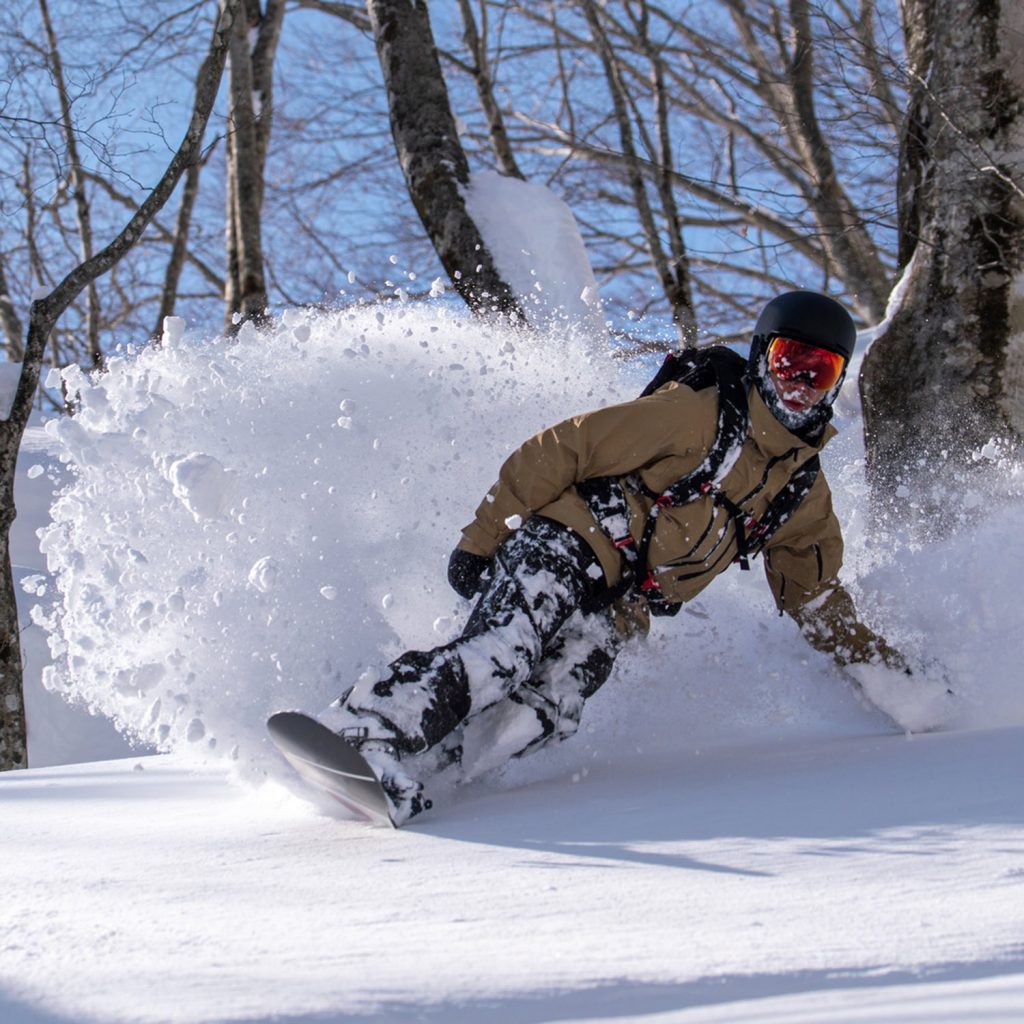
Conclusion
Starting snowboarding can seem like a daunting task at first. But creating a few easy tips can make a big difference, and you’ll confidently ride those slopes in no time. We hope that you enjoyed these snowboarding tips article and feel free to add more tips in the comments below and share with your snowboarding buddies.
Check out our other tips for:

